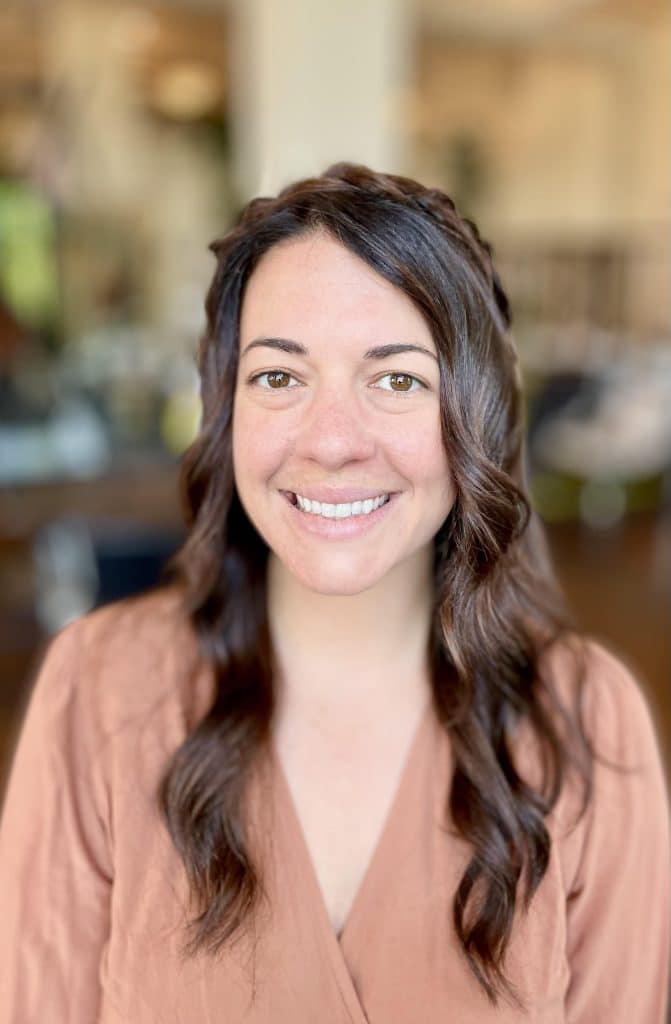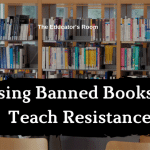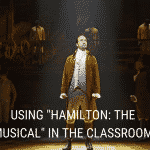Overview:
A high school English-Language Arts classroom is what makes our curriculum vulnerable to national scrutiny by people far removed from our classrooms, yet with power to censor our content.
At a faculty meeting, a colleague once whispered to me, “So, what do you actually do in your English class if everyone already knows how to read and write?” Though it was an innocent enough question from a chemistry teacher, it brought me to the halting realization that the abstract nature of a high school English-language arts classroom is what makes our curriculum vulnerable to national scrutiny by people far removed from our classrooms, yet with power to censor our content.
The short answer to her question is: We develop our skills in reading, writing, speaking, and listening. The long answer: The ethos of the English class is empathy-building. We use literature as a mirror, exploring stories and characters with which students may identify, in turn validating their existence. Alternatively, we read about characters whose lived experiences are so fundamentally different from our own, often in ways we can’t truly understand, that we build empathy in the process. Most importantly, English teachers provide opportunities for students to better understand the human experience as they develop skills to critically think and thoughtfully engage as citizens of the world.
So what do we do when our fundamental “why” is challenged by the permeating epidemic of censorship in schools? When our jobs, reputation, or mental health are jeopardized because we teach culturally responsive topics that make us vulnerable to criticism? Or worse, when censorship prevails, sending the dehumanizing message that some students’ lived experiences are offensive or inappropriate?
Many educators have experienced efforts to censor student learning in their classrooms. Most targeted are concepts of racism, sexism, LGBTQIA+, religion, and politics. And, without the support of administrators, including these critical topics in lessons can feel so intimidating that, unfortunately, many teachers avoid them altogether. Yet, accomplished teachers have forged a path through this curriculum culture war without putting their jobs on the line, and they do this with one special ingredient: choice.
Choice in Classroom Texts and How We Respond To Them
These days, when English teachers assign texts for students to read, we open ourselves up to criticism from many directions: students, parents, the general community, school boards, and even our own colleagues. Due to the nature of our profession, what we teach is inextricably tied to our identity—who we are—no matter how careful we are to keep our opinions out of our lessons. So how can we still explore critical concepts like Ray Bradbury’s censorship and misinformation, Franz Kafka’s classist struggle, or Herman Hesse’s existential search for meaning, all while toeing the line? By allowing student choice. For some teachers, it can be difficult to let go of control and trust that your students will accomplish impactful learning. But, they always do.
When my sophomores conduct rhetorical analysis, I provide a collection of speeches on a variety of topics. Some steer clear of contentious issues, and others boldly address them. One collection, “Leadership Through The Ages,” consists of Dwight D. Eisenhower’s “Atoms for Peace,” Nelson Mandela’s “I am Prepared to Die,” Malala Yousafzei’s “16th Birthday Speech at the United Nations,” Emma Watson’s “Gender Equality is Your Issue Too,” Martin Luther King, Jr.’s “I Have a Dream,” Chimamanda Ngozi Adichie’s “The Danger of a Single Story,” and John F. Kennedy’s “We Choose The Moon.” If a student isn’t interested in any of these speeches, I encourage them to find their own speech. Because, the truth is, it doesn’t matter what they read, but how.
Blending literature circles with student choice naturally adds an element of ownership that powers student groups through rhetorical analysis, where they extract and explore themes entirely on their own–not selected from a list, and certainly not taught by me. Add an inclusive collaboration strategy such as jigsaw, world cafe, or Socratic seminar to ignite academic discussion in which students connect themes across the collection: How Eisenhower’s speech on the devastating power and responsibility of atomic weaponry relates to the devastating power of a single story addressed by Adichie, or Watson’s belief that feminism is everyone’s responsibility.
Literature circles can also be used with independent reading as students explore major themes in their chosen novel and create groups based on common themes. Independent reading is a critical space for students to explore novels that interest them, yet even this personal act is under threat of censorship.
Public Libraries as an Ally
If your school is fortunate to still have a librarian, they may find that stocking the shelves with award-winning, best-selling, and often banned novels like George M. Johnson’s All Boys Aren’t Blue makes them vulnerable to criticism. In some districts, school boards have called for libraries to purge and even burn books which have been challenged by parents or other community members for a variety of reasons. Enter our literary allies: local public libraries.
The American Library Association does not ban books. In fact, they “[condemn] censorship and [work] to ensure free access to information,” according to their Office of Intellectual Freedom. Since public libraries remain unscathed by efforts to censor student reading, they can provide students with banned or challenged novels where your school’s library may be unable.
At the beginning of each school year, I collaborate with our public library’s teen coordinator to kick off a program which provides students with library cards using their school ID, and monthly, she hauls new and bestselling public library books by the truckload (literally) to our high school library for students to check out. The coordinator hosts a book talk, where students ask about a genre or topic, and she pitches a handful of related novels. Then, in a frenzy, students rush to the titles that piqued their interest, free to check out as many books as they want.
Since establishing this program, without which many students would not be able to access the public library, I have witnessed students tucked away in the corners of the library, immersed in novels that they may not have the emotional support and encouragement to read.
Teach Censorship
For freshmen, Fahrenheit 451 is a part of our curriculum, to the dismay of some parents who contest the book for its depiction of government censorship. Yet it is this real-world conflict that makes this a great springboard to teaching about censorship, a contradiction for educators who feel exhausted or defeated by censorship. But, if we give into fear and avoid teaching subjects that feel risky, we give power to those who seek to silence us, and take power away from our students. Instead, we model the critical skill of developing an opinion through the radical act of learning.
Every English teacher has a secret: we live for historical context as a way for our students to make sense of the world and give weight to a novel’s conflicts, characters, and themes. I use the historical context leading into Fahrenheit 451 to explore nonfiction texts that illustrate how censorship has historically been used to disempower people. Examples include state censorship, such as burning of books in Nazi Germany or the Red Scare and the use of misinformation and propaganda, as well as the suppression of education through anti-literacy laws which made it illegal for Frederick Douglass and other enslaved peoples to learn to read or write.
When we learn about these moments in history, we naturally reflect on our present. How can teachers encourage our students to make this connection? Simply ask! Is censorship good? Bad? Why? Does censorship happen today? What is censored? Why? Facilitate a safe, research-driven conversation starting with a written reflection so that students unpack these questions on their own. Then employ a discussion strategy like philosophical chairs which works well as a debate-style platform.
Students often start by discussing times when censorship is helpful, like preventing children from listening to “explicit” music because of profane language or references to inappropriate topics. But slowly, they begin to note contradictions. What begins with music becomes books, then curriculum. Who decides what is appropriate? Should we be avoiding or banning topics that make some people uncomfortable? Who are we “protecting” when we censor information, and who are we harming?
Believe in Your “Why”
This discussion is one example of my “why.” As a National Board Certified Teacher–a rigorous process which I strongly believe creates better educators who improve student outcomes–I feel bolstered by the program’s emphasis on cultural proficiency as a national standard for accomplished teaching. The backing of the National Board for Professional Teaching gives strength to my “why” and motivates me to continue honoring and teaching all of my students.
I can’t help but wish that these thoughtful exchanges between teenagers were the same ones that adults could have in courtrooms, school boardrooms, or even their own living rooms. Yet I remain hopeful that as students continue to discuss challenging topics in school (because if not there, then where?), they will take those skills with them into adulthood so that future generations will no longer wrestle with divisive issues like censorship because these conversations would have begun, and ended, in the classroom.

Christine Banko has a master’s degree in teaching and is a National Boards Certified educator of adult/young adult English-language arts. Her eight years of high school teaching experience in western Washington were preceded by a career in journalism, where she was a contributing writer and editorial assistant at Yes! Media. She is known for her expertise in developing creative and collaborative curriculum for diverse learners, resulting in student growth and a positive classroom culture.






